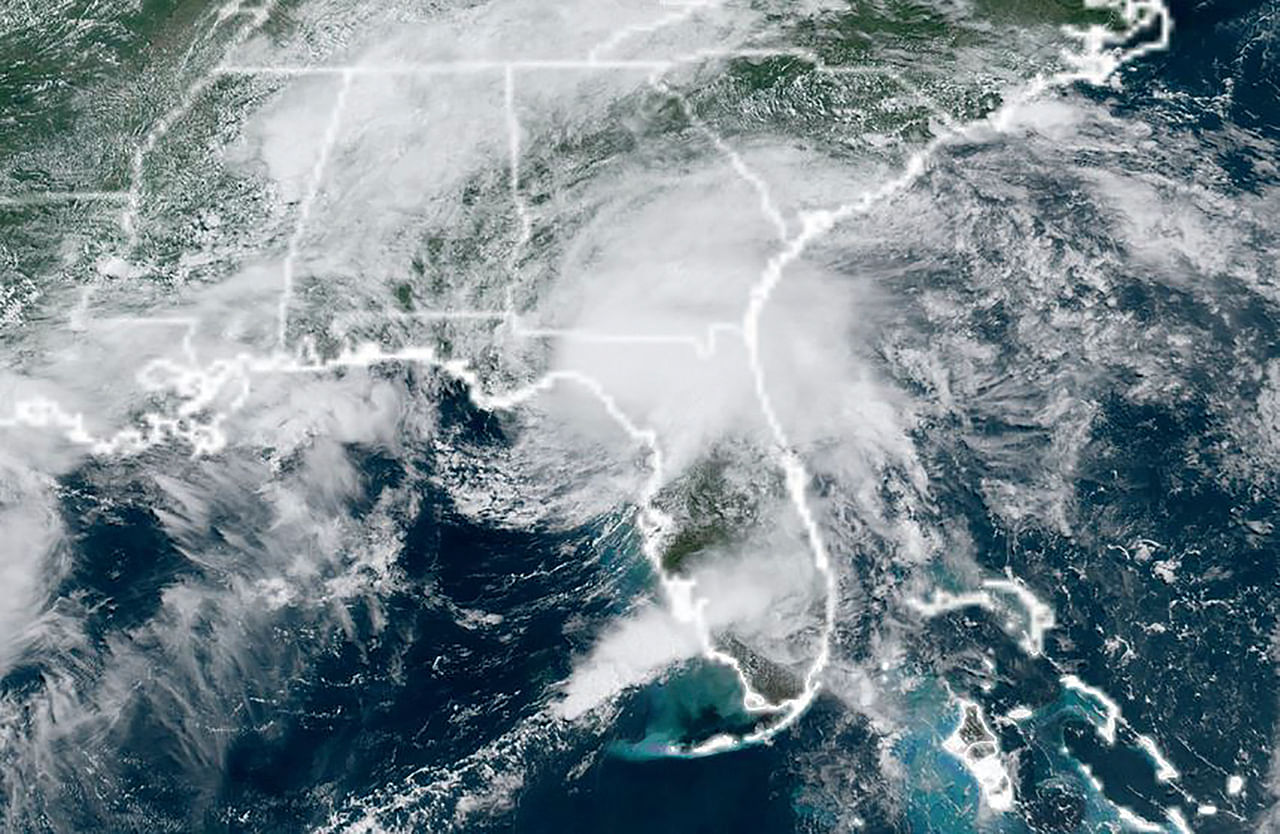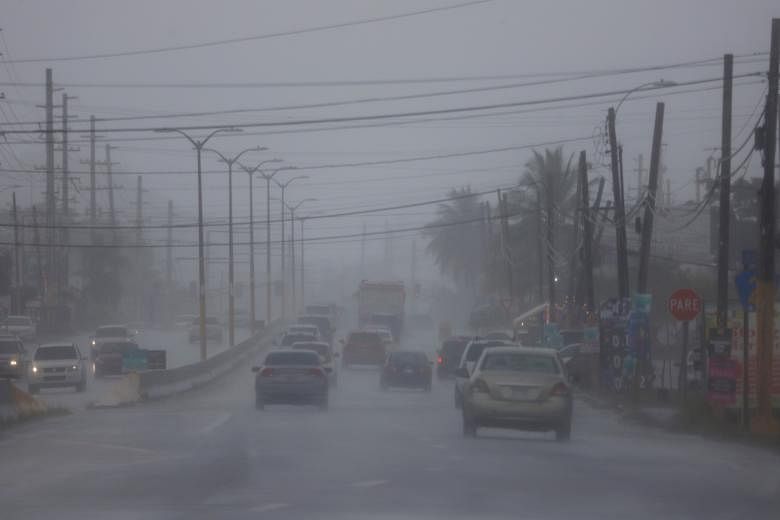SAN JUAN, PUERTO RICO (NYTIMES) - Tropical Storm Fred, which formed late on Tuesday (Aug 10) as the sixth named storm of the 2021 Atlantic hurricane season, was expected to bring heavy rain to the Dominican Republic on Wednesday morning and to parts of Haiti, Turks and Caicos, and the southeastern Bahamas later in the day.
In a 5am update, the National Hurricane Centre lifted a tropical storm warning for the US Virgin Islands and Puerto Rico, which had seen rain and wind since Tuesday as the storm moved northwest toward the Gulf of Mexico.
The hurricane centre warned of up to 4 inches (101.6mm) of rain in Puerto Rico and the Dominican Republic, and said some areas could see up to 6 inches, leading to flash flooding.
Fred was producing winds of up to 64kmh, moving west at 27kmh, the hurricane centre said.
By Thursday, the centre said, the storm is expected to be near the south-eastern Bahamas and the Turks and Caicos Islands.
A tropical storm warning was in effect on Wednesday for the Dominican Republic. A tropical storm watch was in effect for parts of Haiti, the Turks and Caicos Islands, and the southeastern Bahamas, where rainfall forecasts were slightly lower.
The storm was expected to move over Cuba by Friday and head northwest into the Gulf of Mexico, near Florida, according to a forecast by the hurricane centre.
The storm could pose wind and rainfall threats to Florida by Friday, but forecast details were still unclear, the centre said.
The links between hurricanes and climate change are becoming more apparent.
A warming planet can expect to see stronger hurricanes over time, and a higher incidence of the most powerful storms, though the overall number of storms could drop, because factors like stronger wind shear could keep weaker storms from forming.
Hurricanes are also becoming wetter because of more water vapour in the warmer atmosphere; scientists have suggested storms like Hurricane Harvey in 2017 produced far more rain than they would have without the human effects on climate.
Also, rising sea levels are contributing to higher storm surge, the most destructive element of tropical cyclones.
A major United Nations climate report released on Monday warned that nations had delayed curbing their fossil fuel emissions for so long that they could no longer stop global warming from intensifying over the next 30 years, leading to more frequent life-threatening heatwaves and severe droughts.
Tropical cyclones have likely become more intense over the past 40 years, the report said, a shift that cannot be explained by natural variability alone.
Ana became the first named storm of the season on May 23, making this the seventh year in a row that a named storm developed in the Atlantic before the official start of the season on June 1.
The most recent named storm in the Atlantic was Hurricane Elsa in early July. Elsa cut through Cuba and then Florida, eventually making its way into New York City, where heavy rainfall from the storm flooded subway stations and roadways.

In May, scientists with the National Oceanic and Atmospheric Administration (NOAA) forecast that there would be 13 to 20 named storms this year, six to 10 of which would be hurricanes, and three to five major hurricanes of Category 3 or higher in the Atlantic.
Last week, in a mid-season update to the forecast, they continued to warn that this year's hurricane season would be an above average one, suggesting a busy end to the season.
Mr Matthew Rosencrans of the NOAA said an updated forecast suggested that there would be 15 to 21 named storms, including seven to 10 hurricanes, by the end of the season on Nov 30. Fred is the sixth named storm of 2021.
Last year, there were 30 named storms, including six major hurricanes, forcing meteorologists to exhaust the alphabet for the second time and move to using Greek letters.
It was the highest number of storms on record, surpassing the 28 from 2005, and included the second-highest number of hurricanes on record.

